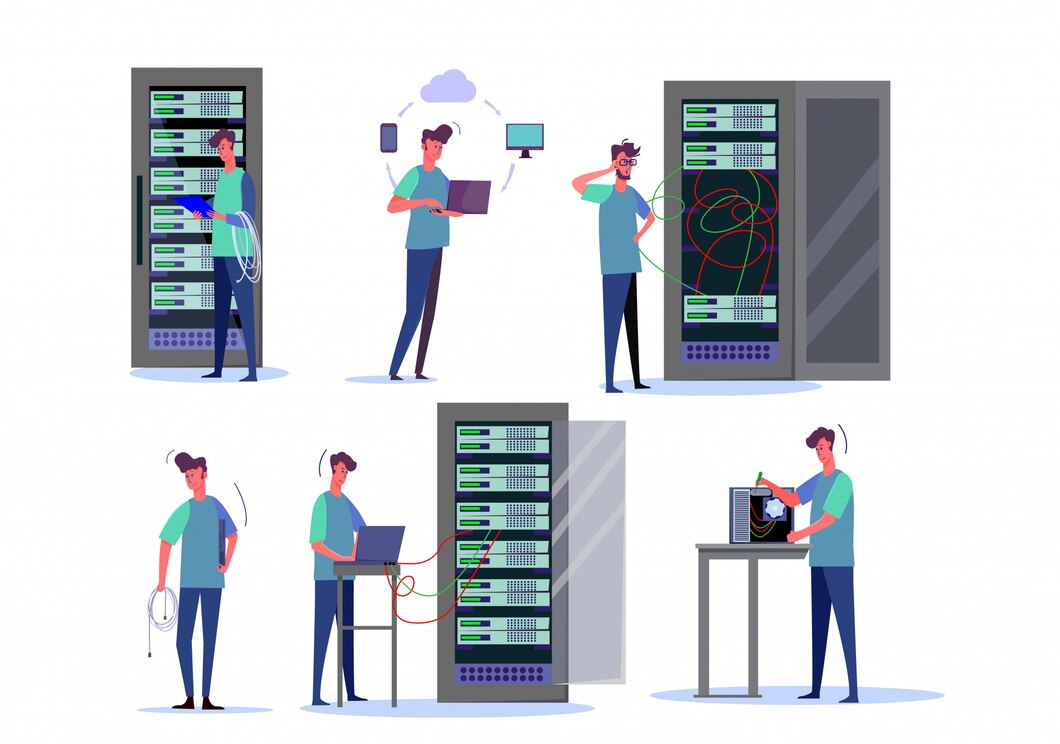Leased Line vs FTTP: Key Differences for Businesses
-
January 23, 2025
-
6 min read

Debating leased line vs FTTP for your business connectivity? Unpack factors like bandwidth, latency, and cost to make an informed choice.
Leased Line vs FTTP: Which High-Speed Internet Is Right for Your Business?
In an increasingly digital business landscape, reliable high-speed internet is no longer a nice-to-have but a non-negotiable. As companies evaluate their connectivity options, two solutions often arise: leased lines and fibre to the premises (FTTP). Both deliver lightning-fast speeds over fibre optic cables but differ in crucial ways that can significantly impact your business operations.
To help you make an informed choice between a leased line vs FTTP, we’ll walk through:
- How leased lines and FTTP work
- Key differences in speed, reliability, and cost
- Factors to consider when choosing between them
- Real-world business use cases for each solution
Understanding Leased Lines and FTTP
Leased Lines offer dedicated, symmetrical speeds, while FTTP delivers ultrafast broadband via fibre-optic connections. Both ensure reliable, high-performance internet for demanding users.
What Is a Leased Line?
A leased line is a dedicated, private connection between your business premises and your internet service provider (ISP). It’s like having your exclusive highway for data traffic, separate from the public internet. Key characteristics of leased lines include:
- Symmetrical bandwidth (equal upload and download speeds)
- Guaranteed speeds and uptime, backed by Service Level Agreements (SLAs)
- Uncontended connection (no sharing of bandwidth with other users)
- Highly secure due to the private, dedicated nature of the line
How FTTP Works
FTTP, as the name suggests, brings fibre optic cables directly into your business premises. However, unlike a leased line, FTTP uses shared infrastructure. Think of it as a high-speed public highway that you share with other businesses and homes in your area. Key features of FTTP include:
- Very high download speeds, often up to 1 Gbps or more
- Lower upload speeds compared to download speeds (asymmetric)
- Potential for contention (sharing of bandwidth) during peak usage times
- More cost-effective than leased lines for most businesses
Leased Line vs FTTP: Major Differences
Leased Lines provide a dedicated connection with guaranteed bandwidth, ideal for businesses requiring consistent performance. FTTP offers high-speed shared broadband, making it cost-effective for homes and smaller setups. Let’s check the following differences to choose the right option for your needs.
Speed and Bandwidth
When it comes to raw speed, both leased lines and FTTP leave traditional copper-based connections like ADSL in the dust. However, there are some key differences:
| Factor | Leased Line | FTTP |
| Download Speed | Up to 10 Gbps | Up to 1 Gbps |
| Upload Speed | Equal to download speed (symmetric) | Lower than download speed (asymmetric) |
| Bandwidth Guarantee | 1:1 contention ratio (dedicated bandwidth) | Potential for contention during peak hours |
While FTTP can offer blazing-fast downloads, leased lines provide the advantage of symmetrical speeds and guaranteed bandwidth. This is crucial for businesses that regularly upload large files, use cloud applications, or rely on video conferencing.
Reliability and Uptime
Uptime is oxygen for modern businesses. Every minute of downtime can mean lost productivity, revenue, and customer trust. Here’s how leased lines and FTTP stack up:
- Leased lines come with SLAs that guarantee uptime, typically 99.9% or higher. If the line goes down, the provider is contractually obligated to restore service within a specified timeframe, often just a few hours.
- FTTP, being a shared service, usually has more relaxed SLAs. While still reliable for most business needs, FTTP may have slightly longer downtime in the event of an outage.
Security Considerations
The dedicated nature of leased lines makes them inherently more secure than shared connections like FTTP. Because your data isn’t travelling over public infrastructure, there’s a much lower risk of interception or eavesdropping. However, FTTP can still be highly secure with proper encryption and network security measures in place. Most businesses find FTTP sufficiently secure for their needs.
Cost Comparison
No question that leased lines come at a premium compared to FTTP. The exact cost depends on factors such as the required bandwidth. It also varies based on the distance between your premises and the provider’s nearest point of presence.
FTTP, on the other hand, is much more affordable for most businesses. The shared infrastructure model allows providers to offer high speeds at a lower price point. Businesses with mission-critical needs justify the higher cost of a leased line for its guaranteed performance and uptime. But for many small and medium businesses, FTTP offers the best balance of speed and affordability.
Choosing Between Leased Line and FTTP
So, how do you decide whether a leased line or FTTP is right for your business? Consider these key factors:
- Criticality of uptime: If your business cannot tolerate any downtime, a leased line with a strong SLA is the way to go.
- Bandwidth requirements: If you regularly transfer large files or use bandwidth-intensive applications, the symmetrical speeds of a leased line can be a game-changer.
- Budget: FTTP is the more cost-effective option for most businesses. Only consider a leased line if you have the budget and a compelling business case for the additional expense.
- Security needs: For businesses with stringent security requirements (e.g., financial institutions), the private nature of leased lines provides an extra layer of protection.
Real-World Business Scenarios
To put this into context, let’s look at a couple of real-world business use cases:
- Small marketing agency: A boutique marketing firm with 25 employees will likely find FTTP more than sufficient for their needs. They can get the speed they need for things like video editing and large file transfers at a price that fits their budget.
- Large financial institution: For a bank with multiple branches and a heavy reliance on secure, real-time data, a leased line is the obvious choice. The guaranteed uptime, symmetric speeds, and enhanced security are well worth the investment.
The Airtel Advantage for Leased Lines
While there are many leased line providers in the market, Airtel’s Internet Leased Line (ILL) stands out for several reasons:
- Scalable bandwidth from 10 Mbps to 100 Gbps
- Industry-leading uptime backed by strong SLAs
- Built-in DDoS protection and firewall security
- 24/7 support and proactive monitoring
- Extensive coverage across India and globally
Conclusion
In the battle of leased line vs FTTP, there’s no one-size-fits-all winner. The right choice depends on your business’s unique needs and priorities. FTTP is the go-to option for high-speed internet for businesses at an affordable price. It’s more than enough for most day-to-day business operations.
But for businesses that demand the utmost in performance, reliability, and security, a leased line is hard to beat. And with Airtel’s ILL offering, you get the peace of mind of a trusted provider with a robust network and 24/7 support.
Ultimately, it’s about finding the solution that empowers your business to thrive in the digital age. Whether that’s a leased line or FTTP, investing in the right connectivity is a decision that will pay dividends for years to come.
Enhance your digital transformation journey with dedicated internet solutions.
 Share
Share









